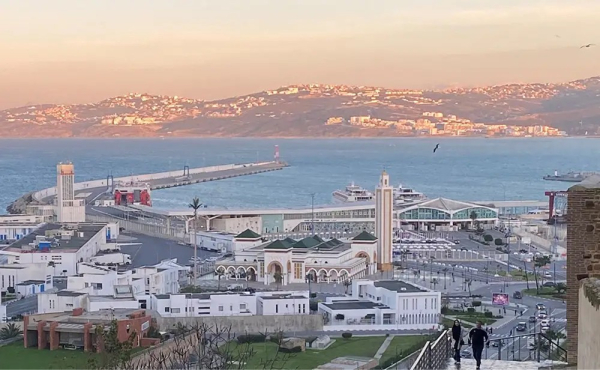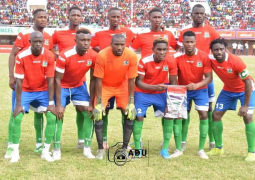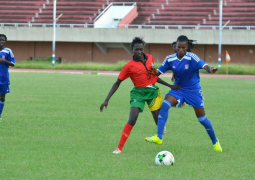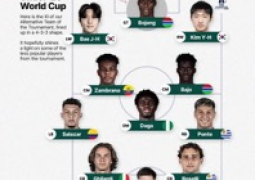
The 2025 Africa Cup of Nations is set to electrify the continent as Morocco hosts one of football’s most prestigious tournaments from 21 December 2025 to 18 January 2026.
The continent's biggest football fiesta will together 24 of Africa’s top national teams.
The competition promises a blend of high‑octane football, tactical mastery and cultural celebration.
Fans will experience world‑class matches across six Moroccan cities, from the capital Rabat to the coastal vibrancy of Agadir and Tangier, the historic charm of Fès and the cultural heart of Marrakech. With nine state‑of‑the‑art stadiums, passionate home crowds and a schedule packed with decisive fixtures, AFCON 2025 is set to showcase both the athletic prowess and strategic intelligence of Africa’s finest players.
This news outlet provides a comprehensive preview of the tournament, highlighting each host stadium, city and a detailed breakdown of fixtures leading up to the knockout rounds, semi‑finals and ultimately the grand final.
Host Cities and Stadiums
Morocco’s hosting strategy for 2025 Africa Cup of Nations reflects ambitious infrastructure investment, national prestige and logistical planning.
The tournament will be held across six cities and nine stadiums, representing a mix of major urban centres and newly upgraded venues.

Rabat, the administrative and political capital of Morocco, takes centre stage in the tournament’s geography.
With excellent transport links (via Rabat‑Salé Airport, train rail network, quality hotel and accommodation options), it serves as a logistical hub for teams and fans alike.
Four stadiums in Rabat have been selected, underlining the city’s key role.
Stadiums in Rabat
Complexe Sportif Prince Moulay Abdellah: With a capacity of approximately 65,000‑69,500, this flagship stadium will host the opening match, a quarter‑final, a semi‑final and the grand final.
It features a modern hybrid pitch, roofed stands and upgraded VIP/media facilities.
Complexe Sportif Prince Héritier Moulay El Hassan - A smaller venue (~22,000 capacity) within Rabat, selected for group stage matches and some Round of 16 fixtures.
Stade Al Barid- Capacity around 18,000, one of the compact venues in Rabat for group stage ties.
Rabat Olympic Stadium (Annexe)- Newly constructed (opened May 2025) with 21,000 capacity, this venue will host a selection of group matches.
By concentrating on so many venues in Rabat, organizers ensure many teams are within relatively short travel distances, and fans can explore multiple stadiums while based in one city.
Casablanca

Casablanca is Morocco’s economic and cultural powerhouse, and home to one of the country’s most iconic football venues. The stadium here will host group‑stage games and the third‑place playoff.
Stade Mohammed V – With a capacity of ~45,000, this historic stadium has been completely refurbished ahead o 2025 Africa Cup of Nations.
Agadir

Situated on Morocco’s southern Atlantic coast, Agadir offers a picturesque stadium setting and relaxed seaside ambience.
Grand Stade d’Agadir – Capacity around 41,000‑46,000, this venue will host group games (and possibly a quarter‑final) and allows fans to combine beachside leisure with match‑day excitement.
Marrakech
Marrakech brings a distinctive cultural flavour, with its vibrant medina, historic architecture and modern amenities.
Travel via high‑speed rail from other cities is convenient.
Grand Stade de Marrakech – Capacity around 41,000–45,000. It will host six group matches, a Round of 16 tie and a quarter‑final.
Fès

Fès blends ancient Moroccan heritage with modern sport infrastructure, offering a unique match‑day experience.
Complexe Sportif de Fès – Opened in 2007, with a capacity around 35,000.
For 2025 Africa Cup of Nations, it will host group games and a Round of 16 fixture.
Tangier

Tangier, located at the north of Morocco by the Strait of Gibraltar, hosts the largest venue in the tournament and will be instrumental during the knockout stages.
Grand Stade de Tanger – With a capacity of ~75,000, this stadium will host significant fixtures, including (according to reports) a semi‑final.
Tournament Schedule & Fixture Breakdown
The tournament begins with the group stage and builds momentum toward the knockout rounds culminating in the final on 18 January 2026 at Prince Moulay Abdellah Stadium in Rabat.
Group Stage
Six groups, labelled A through F, each contain four teams. The group stage will be rich in variety, traditional powerhouses, emerging nations, and host nation Morocco in Group A will play on home soil.
The fixtures for the 2025 Africa Cup of Nations are:
21 December 2025 – Host nation Morocco vs Comoros (Group A) at Princ Moulay Abdellah, Rabat.
22 December 2025 – Mali vs Zambia (Group A) in Casablanca; Egypt vs Zimbabwe (Group B) in Agadir; South Africa vs Angola (Group B) in Marrakech.
23 December 2025 – Nigeria vs Tanzania (Group C, Fès); Tunisia vs Uganda (Group C, Rabat); Senegal vs Botswana (Group D, Tangier).
28 December 2025 – Algeria vs Burkina Faso (Group E, Rabat); Cameroon vs Ivory Coast (Group F, Marrakech); Gabon vs Mozambique (Group F, Agadir).
29 December 2025 – Morocco vs Zambia (Group A, Rabat); Comoros vs Mali (Group A, Casablanca); Egypt vs Angola (Group B, Agadir); Zimbabwe vs South Africa (Group B, Marrakech).
30 December 2025 – Nigeria vs Uganda (Group C, Fès); Tanzania vs Tunisia (Group C, Rabat); Benin vs Senegal (Group D, Tangier).
These fixtures show a sampling of the group stage; the full slate extends across all nine venues and spreads excitement across multiple cities simultaneously.
Knockout Rounds
After the group stage, the format transitions into single‑elimination matches: Round of 16, quarter‑finals, semi‑finals and the final.
Round of 16: Starts around 3‑6 January 2026, featuring group winners and runners-up as well as the best four third‑placed teams.
Quarter‑finals: Scheduled for approximately 9‑10 January 2026 across venues such as Rabat, Tangier, Agadir and Marrakech.
Semi‑finals: 14 January 2026. One semi is expected in Tangier and one in Rabat.
Third‑place playoff: 17 January 2026 at Stad Mohammed V in Casablanca.
Final: 18 January 2026 at Princ Moulay Abdellah Stadium, Rabat.
Host Nation Advantage: With Morocco playing all its Group A matches on home soil, fans can anticipate a strong opening campaign.
The familiarity of the venues, backed by a home crowd, could deliver a significant advantage as the host nation aims to make a deep run.
Stadium Diversity & Fan Experience
The nine‑venue format across six cities allows for wide fan dispersion.
From Rabat’s political centrality to Agadir’s coastal vibe, Marrakech’s cultural hub, Fès’s heritage streets and Tangier’s northern charm, each city offers a unique match‑day experience.
Infrastructure & Legacy: Morocco’s investment is clearly visible. Stadium upgrades, transport links and hospitality infrastructure reflect long‑term planning beyond Africa Cup of Nations.
For instance, the government has a partnership to upgrade six stadiums and build a new one as part of the lead‑up to both AFCON 2025 and the 2030 FIFA World Cup.
The investment in base‑camps, luxury accommodation and training facilities also illustrates a new benchmark for continental tournaments.
Competitive Landscape
This edition promises high competition as traditional African powers face rising challengers and tactical sophistication is likely to escalate.
The venues and matches will test not only athleticism but also match‐management, squad depth and adaptability.
Practical Insights for Teams & Analysts
From a performance analysis and high‑performance standpoint, this tournament provides a rich canvas. Key considerations include:
Travel and recovery logistics: With multiple venues across spread‑out geography, teams must manage transit, climate variations and pitch conditions.
Venue characteristics: Each stadium’s design, capacity, crowd proximity, roof coverage, pitch type, affects match atmosphere and player performance. For example, the Grand Stade de Tangier’s massive capacity (~75,000) will bring an intense environment for knockout matches.
Contextual physical demands: Data like high‑intensity running, sprint counts, accelerations should be interpreted considering venue conditions (sea‑level vs altitude, temperature, fan pressure), tactical demands and match state.
Smart scheduling for analysts: Given the overlapping starts, multiple matches across venues, and the early group stage, analysts must plan for rapid turnaround, efficient data capture and consistent benchmarks across different locations.
Fan, media & broadcast dynamics: Larger stadiums with full roof coverage and modern facilities provide high‑quality broadcast conditions, which in turn raises the profile of tactical and performance data exposure.
Conclusion: 2025 in Morocco promises to be one of the most ambitious editions in the tournament’s history. With nine venues across six cities, world‑class infrastructure, passionate crowds and a 24‑team format packed with intrigue, this will be a showcase of African football at its best.
The tournament isn’t just about physical prowess, it’s about tactical intelligence, strategic execution and the broader experience of football as culture, spectacle and national pride.
Whether you’re a coach, analyst, performance practitioner or fan, the opportunities for insight are immense.
From stadium atmospheres to travel planning, from match performance to long‑term legacy, 2025 Africa Cup of Nations offers layers of meaning.
As the competition unfolds, it will become clear: the most effective teams will not only run hard, but they will also run smart, adapt quickly and make every movement count.
Get ready for a tournament where Africa takes centre stage, in stadiums that reflect both heritage and modern ambition, in cities that blend tradition and progress and on pitches where the next generation of football stars will shine.
Source: ISSPF





